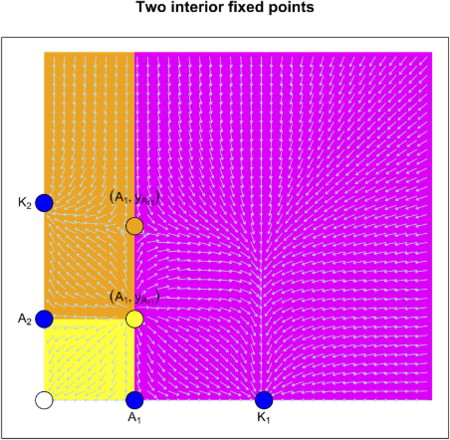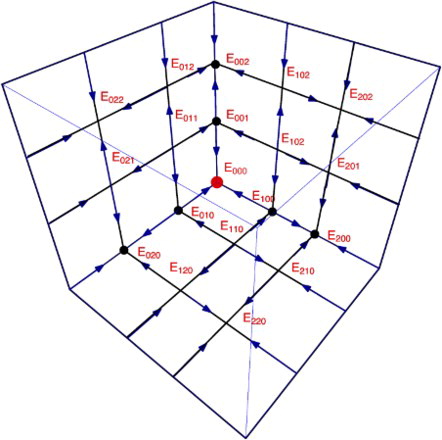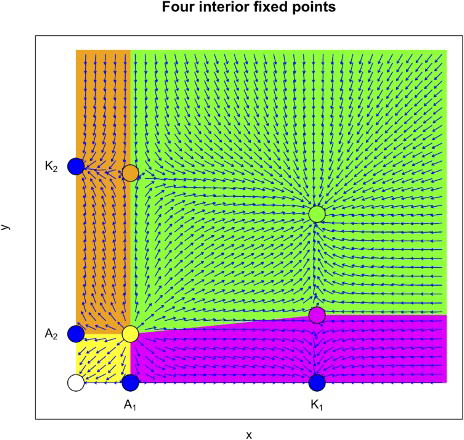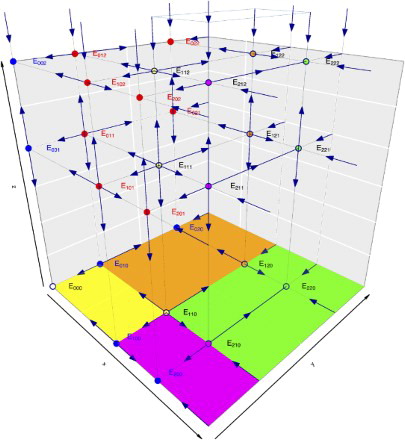Figures & data
Figure 1. The graph shows the growth rate per capita as a function of the density (size) of the population. The three curves represent the cases of no Allee effect (brown), weak Allee effect (blue) and strong Allee effect (green).
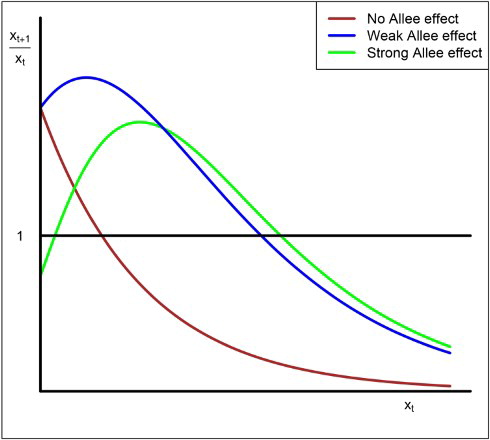
Figure 2. In the strong Allee case, there are three fixed points, (extinction),
(the Allee threshold) and
(the carrying capacity). If the initial size
of the population is less than A, then its orbits converge to 0 and the population goes to extinction.
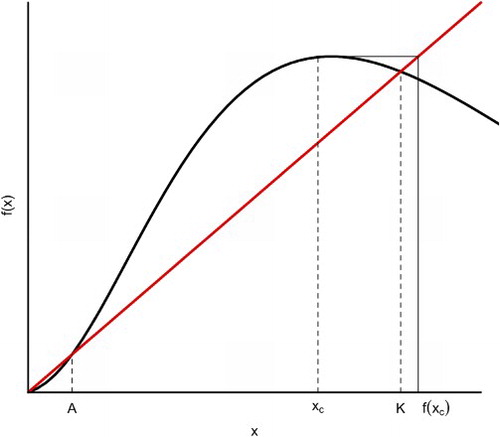
Figure 3. The graph illustrates the various scenarios that are determined by the location of . There are five scenarios where we have from zero to four interior fixed points.
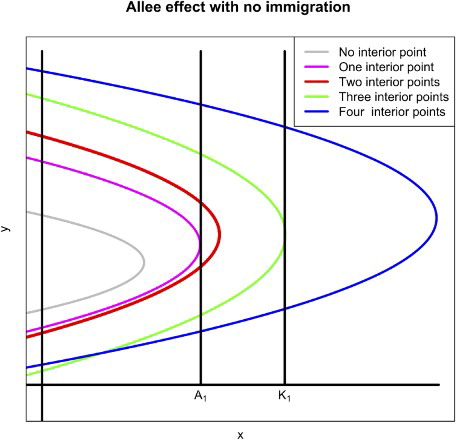
Figure 5. The phase space diagram in the case of two interior fixed points. There are three regions: extinction region (yellow), exclusion region of x (brown) and exclusion region of y (magenta).
